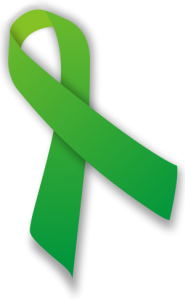Brain Injury Awareness Month and the “Invisible Disability”
 Chances are, you might not have known that March is Brain Injury Awareness month. In fact, unless yourself or a loved one has ever suffered from a Traumatic Brain Injury (TBI), you might not also know that TBI’s account for a great portion of deaths and disabilities in the U.S. and cost a stunning $76 billion every year (Centers for Disease Control).
Chances are, you might not have known that March is Brain Injury Awareness month. In fact, unless yourself or a loved one has ever suffered from a Traumatic Brain Injury (TBI), you might not also know that TBI’s account for a great portion of deaths and disabilities in the U.S. and cost a stunning $76 billion every year (Centers for Disease Control).
Known mostly by its sufferers as the “invisible disability,” TBI’s often go undetected. Because most signs of a TBI aren’t visible, it is no wonder that those dealing with the pain of having one might feel alone in their struggle. However, nothing could be further from the truth.
Traumatic Brain Injuries affect 2.5 million children and adults every year.
If you or a loved one has recently sustained a TBI, you are certainly not alone.
What Causes Traumatic Brain Injuries?
A TBI can occur any single time the head or skull is impacted in an accident. They occur on one of the three following ways:
- Force to the head
- An object hitting the head
- Violent movement of the head
A car accident, physical violence and almost any sport – especially boxing – can set the stage for blunt force trauma to the head.
For small children, the risk for TBI’s is even higher, as young craniums are more fragile and toddlers are often prone to slips and falls as they learn how to walk, run and play.
While you may not personally deal with a TBI, you can see how a severe injury to the head can happen in a lot of situations that are a part of our daily lives. Knowing how to spot a TBI and understanding the symptoms can make a life changing difference if the time ever calls for it.

Types & Symptoms of Traumatic Brain Injuries
The severity of a TBI will depend on two factors, mainly: how hard the skull is impacted, and whether a closed or penetrating injury is inflicted.
- A closed head injury occurs when the object impacting the head does not break the skull at all. A concussion is an example of this.
- A penetrating injury occurs when the object pierces or fractures the skull and damages the underlying brain tissue. When the bone of the skull cracks or breaks, it is deemed a skull fracture, and a depressed skull fracture presses into the brain tissue, generally causing a contusion or internal bleeding.
Shaken Baby Syndrome is an abusive head trauma specific to children up to the age of five. The child is shaken violently, causing the brain to bounce back and forth off the skull, resulting swelling, pressure and internal bleeding.
Depending on the type of head injury, the symptoms may vary and be somewhat difficult to recognize.
Symptoms of a mild traumatic brain injury may include:
- Headache
- Confusion
- Lightheadedness
- Blurred vision
- Ringing in the ears
- Difficulty concentrating
- Sensitive to light or sound
- Temporary unconsciousness
Symptoms of a moderate to severe traumatic brain injury may include:
- Repeated vomiting or nausea
- Changes in behavior, like irritability
- Drainage from the ears or nose
- Numbness in the arms or legs
- Inability to awaken from sleep
- A lasting headache
- Slurred speech
- Dilated pupils
- Seizures
Life after a Traumatic Brain Injury
If you or someone you know has recently suffered a brain injury, starting the process of moving forward can be difficult and feel overwhelming. Based on the nature of your brain injury and how it happened, talking with a professional attorney who is experienced with handling traumatic brain injury cases and knows what you are going through can be the most valuable choice you make.
You are not alone, and we at The Oshman Firm want to hear from you. Get a 100% confidential, no-cost, no-obligation case evaluation today and let us be your advocates. Call (800) 400-8182, and take the first step towards moving on with your life.



